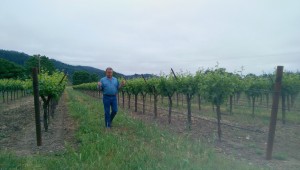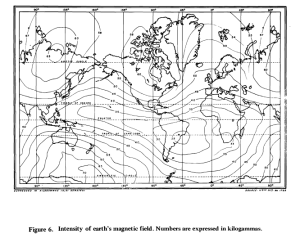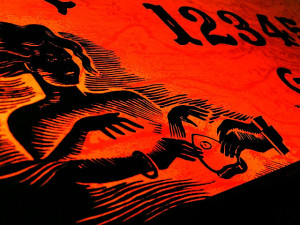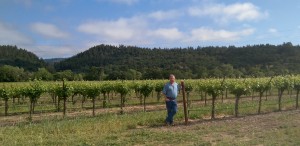The following article is my latest contribution to the print magazine SOMM Journal. I feel very honored to have been given the opportunity to write for this fantastic periodical and encourage each and every one of you to check it out when you get a chance. With 6 issues per year, subscriptions are FREE to those in the wine industry. There is a fee for non-industry folks. Please visit the SOMM Journal site to download the latest issue of the journal, as well as read web-only exclusives. You may also subscribe to SOMM Journal on their website or go there directly by clicking here.
Printed for the first time online with permission.
Without further ado, here is my piece (unedited) for SOMM Journal:
Water dowser, water diviner, water witch. Call him what you will, but to some, Marc Mondavi is the Patron Saint of Water. Drought in CA keeps business booming for Mondavi, as more and more people struggle to find good, sustaining water sources on their property.
After years of practice, Mondavi can walk along a property with his copper divining rods and figure out exactly where there is a water source, how fast it is flowing, and how much is there.
Is there any scientific evidence for “water witching”? Most research on the subject says no. Several studies found that water diviners were no better able to predict where an underground water source would be than chance. However, according to Mondavi, he is able to find these water sources using his copper divining rods with great accuracy.
The USGS employs the use of water diviners, though they admit that there is no scientific evidence to back up the accuracy of the craft. Their explanation of “successful” water dowsing is that there is so much underground water everywhere that it would be pretty hard to drill a well and not find water.
Mondavi argues while this may be true in many cases, he can go one step further and determine the details of the water flow and that there has to be more to it than just luck.
If science says that dowsers predictions are no better than random chance, how can you explain the highly accurate predictions by diviners like Marc Mondavi ?
Here are some ideas to toss around:
Geomagnetism
One possible explanation relates to a physical interaction between the earth’s magnetism and the metal divining rods. Studies have shown that there is a change in the magnetic gradient when moving water is present. Theoretically, if an object that is made up of a material that is attracted or repulsed by magnetic forces, like a copper divining rod, then as these rods are passed along a transect they should move when the magnetic force changes over an underground water source.
One 1970s study found that the accuracy of inexperienced individuals finding underground water sources significantly increased when metal hangers and copper rods were used, indicating that it’s possible that what small dowsing effects may have been observed were amplified when metal-based dowsing rods were used.
Gravitational Force
While the geomagnetism theory is plausible, how can you explain dowsing using non-metal objects such as coconuts or tree branches? One theory is that the dowsing rods are interacting with a change in the gravitational pull as they cross over an underground water source.
According to NASA, the gravitational pull of the earth varies, depending upon many factors including elevation of the land, the thickness of the earth’s crust at any given point, as well as the material under the surface. So, in theory, as someone walks along a path with a divining rod, regardless of the material of that object, as they pass over an underground water source, the gravitational change will act upon that object and pull it closer to the ground.
Human Magnesensotivity
Let’s say that there is something to this magnetism theory, but it’s not actually an interaction between the divining rods themselves and is somehow related to the actual person holding the rods. One study tested this idea by shielding different parts of a dowser’s body from magnetic forces and found that his ability to find water sources actually decreased when he was no longer able to interact with these forces. On the other hand, when he was not magnetically shielded and freely able to interact with the environment, his ability to find water sources significantly increased.
There are countless species all over the world that take the earth’s geomagnetic fields to their advantage. Many birds, insects, and other vertebrates can “tap in” to this field, giving them the ability to orient themselves in space and navigate long distances. Recently, scientists discovered that the ability of these animals to interact with the earth’s geomagnetic fields is at least in part driven by light-sensitive chemical reactions with the protein cryptochrome (CRY) in their bodies.
It’s not clear if humans also have this navigational ability; however, one recent study discovered that humans do possess the same protein found in other vertebrates that allow them tap into this system. Known as Human cryptochrome (HCRY), this discovery raises the question that humans may have the ability to interact with the geomagnetic fields of the earth, a previously unknown phenomena.
Could water dowsers perhaps have increased expression of HCRY in their bodies? Would higher HCRY levels allow dowsers to better “feel” the environment on a geomagnetic level?
Piezoelectric Effect
Another theory is related to the Piezoelectric Effect. The Piezoelectric Effect is the ability of an object to generate an electrical charge in response to a mechanical stressor. Some studies have found that bone is capable of producing this piezoelectric effect, even though it would be seemingly unnoticed by the individual undergoing the effect.
One study argued that when the dowser arms were relaxed, there was no detectable piezoelectric effect measured. However, when the dowser was actively gripping the rods, that resulted in mechanical stress being applied on the arms bones and thus registering a measureable piezoelectric effect. Theoretically, as the dowser passes by an underground water source, there is a change in the electromagnetic field prompting a piezoelectric response by the bones (possibly onto the nerves) thus moving the rods.
When I talked to Marc about his water divining practice, he told me that right before the rods cross, he can actually feel something in his body. He wasn’t able to describe to me what that feeling was, but just that he could “feel something”. Could Marc be feeling the geomagnetic force in his body? Could he be feeling the piezoelectric effect in his bones? As I explained all these possibilities to Marc, he said he could definitely buy into those explanations.
Ideomotor Action
A different explanation for water dowsing relates to a psychology. In describing the action of water dowsing, it has been suggested that the mechanism of action could be similar to that of a Ouija board.
Some scientists have suggested that the movement of the Ouija board is powered by what is known as ideomotor action and not spirits. Ideomotor action is a phenomenon where the action of an individual is controlled unconsciously by a thought and not as a response to any extrasensory stimuli. In other words, without you even realize it, you push the Ouija indicator piece yourself.
As an example of this ideomotor phenomenon in water dowsing, a professor at the College of Mount Joseph performed an experiment on one of his classes using a cup of water and a cup of sugar. After having a few students practice on the cups, he secretly switched the position of the cup of water for the cup of sugar. When the students tried the exercise again, the rods still crossed over the cup of sugar where the cup of water used to be located prior to the secret switch. The professor concluded that the action of the rods were not caused by the water, but was in fact caused by the unconscious expectation of the students of where they remembered the water cup to be previously.
If ideomotor action explains how water witching works, how would they unconsciously know where to cross the rods?
Unconscious Understanding and Master of Hydrology
Perhaps dowsers know more about the physics of water than they realize. For example, Catchment Hydrology is the study of water flow and movement through a drainage basin. If you have information regarding the soil, the bedrock, and the slope of the hillside, you can figure out where and how fast water should be flowing.
When talking with Marc, he told me he never tested for water sources at the top of the hill because he knew that there would be more water flowing faster at the bottom. This is basic hydrology. If through experience he knows the likely behavior of a water source based on the physical land he’s standing on, then ideomotor action theory would suggest that the rods would cross exactly where the water source is flowing and flowing fast.
“Experience fine-tunes you”, he said to me as I asked him if he’s always been accurate. Marc described that when he was just learning the craft, he was always over-estimating the amount of water flowing in an area. Could it be that over time he was learning about the hydrology of the area, so when it came time to ask the rods questions, he already knew the answers?
Conclusions
Despite the fact that some studies found that water dowsers guesses were no better than random chance, there are still people like Marc Mondavi who seem to have an incredibly accurate ability to have an incredibly accurate ability to
predict where water sources are located and sometimes more details in terms of how much and how fact that water is moving.
From geomagnetic interactions between the rods or physiological changes to the human body to unconsciously moving the rods due to expert knowledge on hydrological principles, there might just be an explanation for seemingly successful water dowsing after all. Without precise scientific experiments, of course, these ideas are just speculation, however, based on available evidence seem as though they could be plausible and worthy of further investigation.
Selected References:
Higgins, S. 2007. The effect of magnetically shielding a dowser. Rose Croix Journal 4: 45-54. (PDF)




